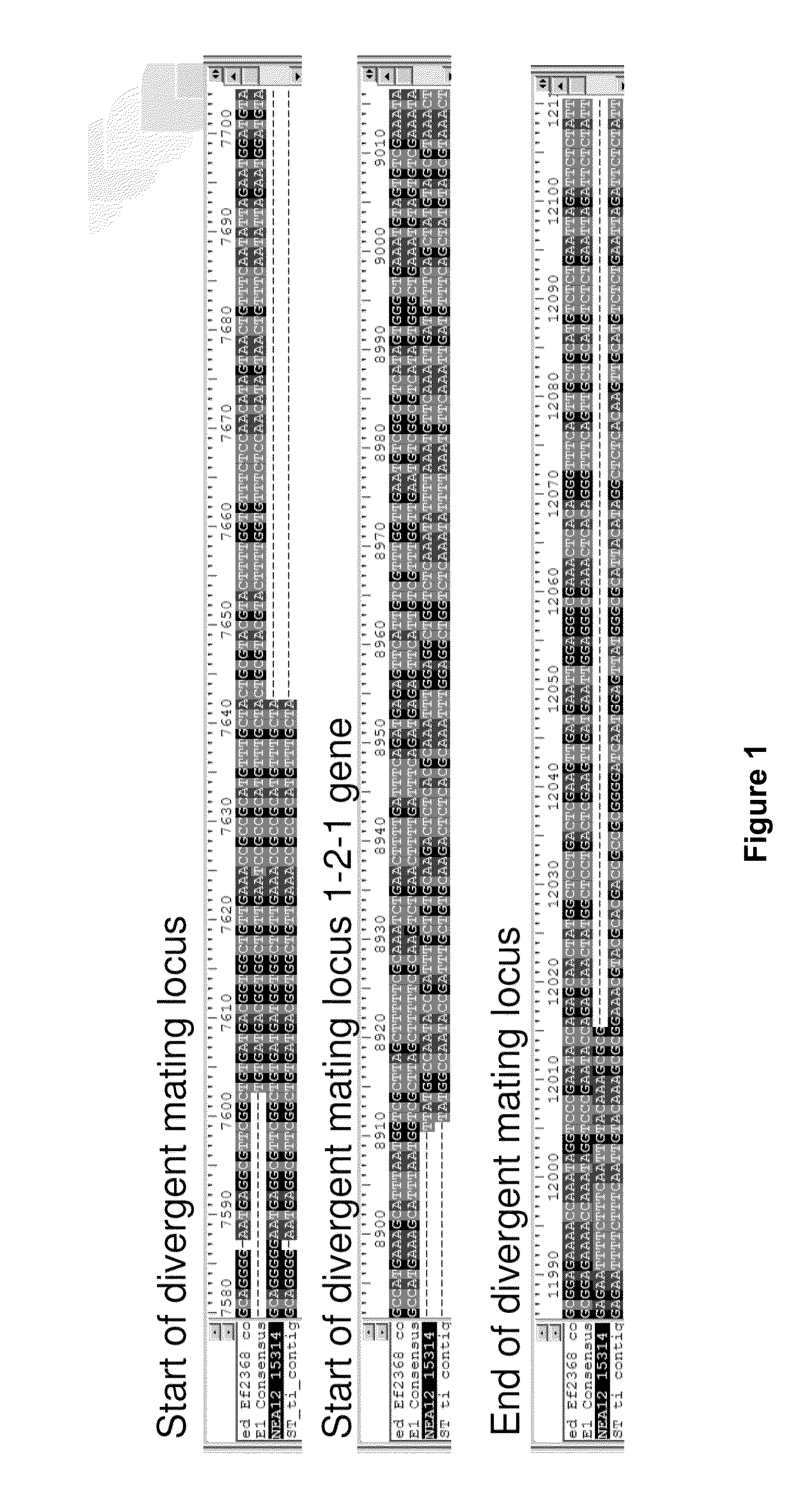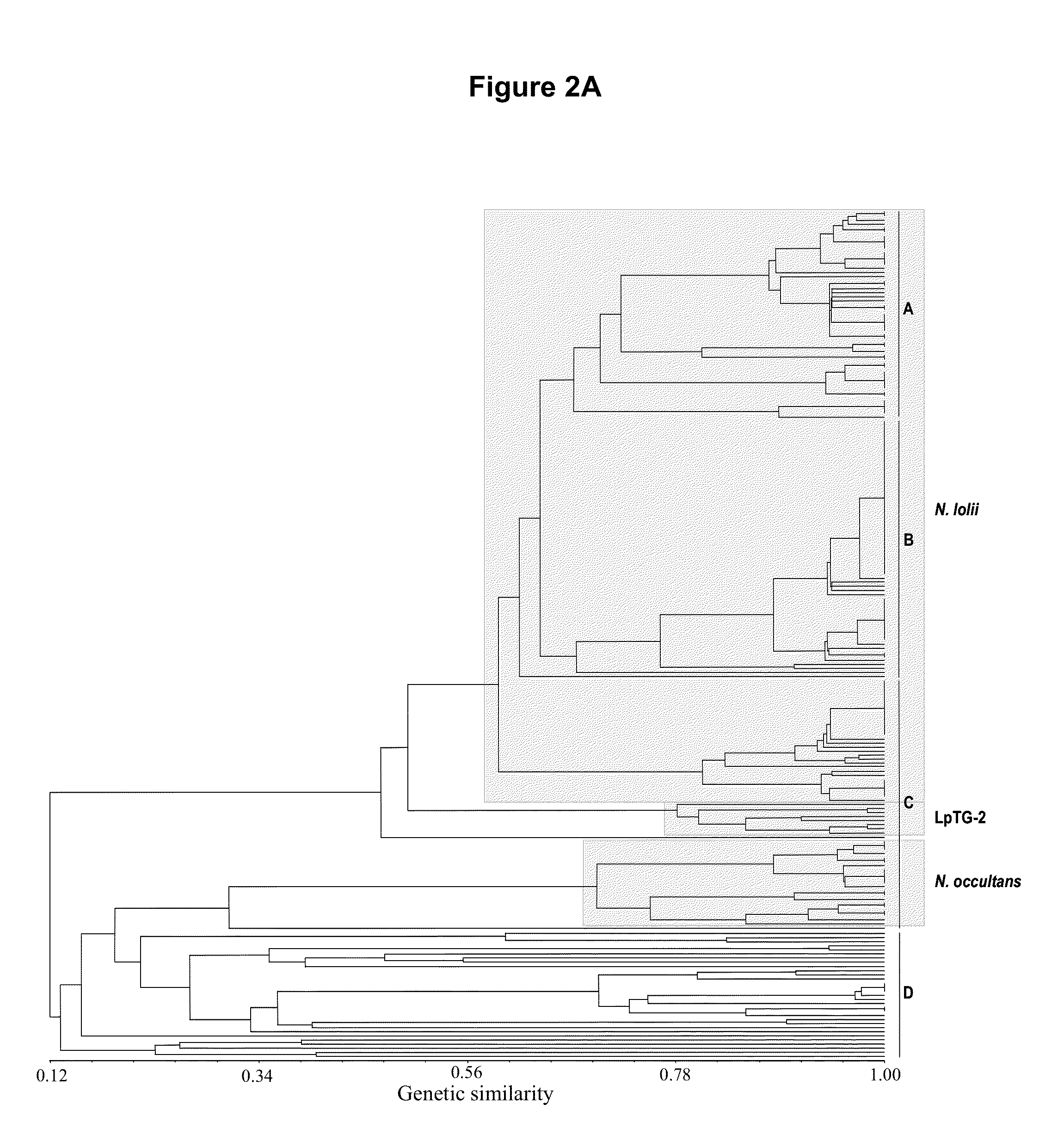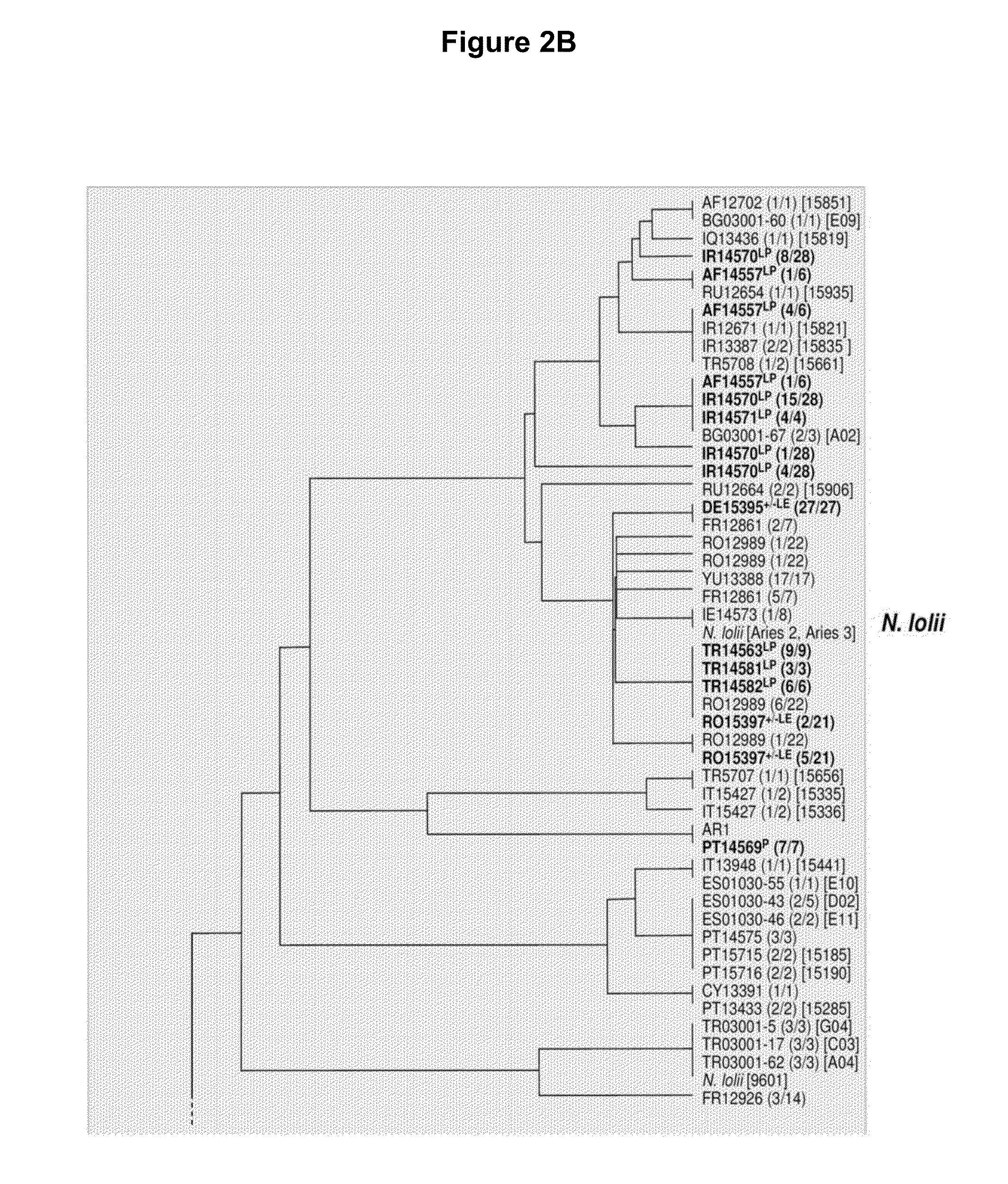Endophytes and related methods
a technology of endophyte and ergot alkaloids, applied in the field of endophytic fungi, can solve the problems of reducing herbivore feeding, toxic to grazing animals, limiting usefulness, and low inoculation frequency of endophyte metabolites,
- Summary
- Abstract
- Description
- Claims
- Application Information
AI Technical Summary
Benefits of technology
Problems solved by technology
Method used
Image
Examples
example 1
Identification of Novel Endophytes
[0293]A collection of 244 perennial grass accessions was assembled for the discovery of novel endophyte strains. The collection targeted accessions from the Northern Mediterranean and Eastern Europe for endophytes that lack lolitrems, as well as accessions from the Middle East, the proposed centre of origin of perennial ryegrass and N. lolii.
[0294]Genotypic analysis of endophyte content was performed across a total of 189 accessions. From each accession 1-5 plant genotypes were analysed for endophyte. Endophyte incidence was low, with endophyte detected in 51% of accessions. Endophyte was consistently detected (with ≧10 SSR markers) in 77 of the accessions.
[0295]Endophytes representing five different taxa were detected across the 77 accessions with 18 SSR markers used to investigate endophyte diversity in perennial ryegrass (FIG. 2). N. lolii was predominant, occurring in 63 accessions. Also detected, although less common, were LpTG-2 and putativel...
example 2
Candidate Endophytes
[0301]Candidate endophytes for further study were chosen on the basis of their genetic identity and metabolic profile. Host-endophyte combinations producing significant amounts of lolitrem B were eliminated, as the ryegrass staggers syndrome produced by this alkaloid is the most important limitation for livestock production.
[0302]The candidate endophyte NEA10 (originating from Spain) was identified as a novel genotype in this analysis with an unknown toxin profile. Its genetic identity is a unique N. lolii strain. Following in planta metabolic profiling analysis, candidate endophyte NEA10 was found to produce ergovaline and peramine, and not lolitrem B.
[0303]The candidate endophyte NEA11 (originating from France) was identified as a novel genotype in this analysis with an unknown toxin profile. Its genetic identity is a unique LpTG-2 strain. Following in planta metabolic profiling analysis, candidate endophyte NEA11 was found to produce ergovaline and peramine, a...
example 3
Methodologies for Endophyte Characterisation
Endophyte Isolation
[0306]Novel candidate endophytes were isolated from their host plant to establish an in vitro culture. Following isolation, the genotype of each endophyte was confirmed by SSR analysis to ensure a high level of quality control prior to inception of isogenic inoculations.
Establishment of Meristem Cultures for a Diverse Perennial Ryeqrass Host Panel
[0307]A set of cultivars representing elite germplasm were obtained, including forage and turf types. Meristem cultures from different cultivars were established to evaluate and compare the phenotypic properties of novel endophyte strains in diverse isogenic host backgrounds. Embryogenic genotypes were identified for each of the cultivars through callus induction and proliferation. Subsequent regeneration of embryogenic genotypes identified primary tissue culture responsive (pTCR) genotypes for each of the cultivars. The number of pTCR genotypes with regeneration frequencies ran...
PUM
| Property | Measurement | Unit |
|---|---|---|
| Dimensionless property | aaaaa | aaaaa |
| Dimensionless property | aaaaa | aaaaa |
| Dimensionless property | aaaaa | aaaaa |
Abstract
Description
Claims
Application Information
 Login to View More
Login to View More - R&D
- Intellectual Property
- Life Sciences
- Materials
- Tech Scout
- Unparalleled Data Quality
- Higher Quality Content
- 60% Fewer Hallucinations
Browse by: Latest US Patents, China's latest patents, Technical Efficacy Thesaurus, Application Domain, Technology Topic, Popular Technical Reports.
© 2025 PatSnap. All rights reserved.Legal|Privacy policy|Modern Slavery Act Transparency Statement|Sitemap|About US| Contact US: help@patsnap.com



